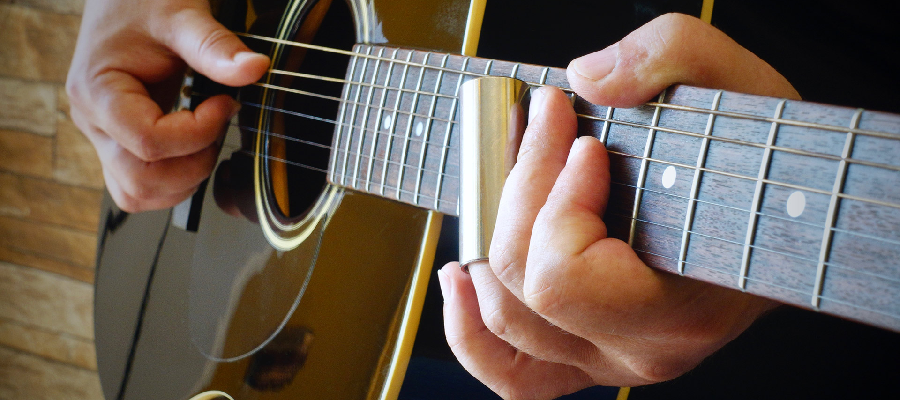Guitar, a musical instrument that creates wonder with six strings, has its origin in the 16th-century Spanish instrument Guitarra Latina, which had a waisted body and four strings. Several changes occurred to this instrument from the 16th century to the 19th century. The fifth string was added in the 1600s, and the sixth was added in 1800. In the nineteenth century, the innovations by Antonio Torres resulted in today’s Guitarra, which is strung with three gut and three metal spun silk strings. The newer guitars became broader and shallower with a thin soundboard; double courses were replaced by single strings of standard tuning E-A-D-G-B in 1800. There are primarily three types of guitars. But this complex musical instrument that can work magic with its strings has several varieties within. This article will deal with these three primary varieties as well as lesser-known varieties of the guitar.
Acoustic Guitarra
These are known for their hollow bodies, which amplify the sound of the string. Made out of wood, they have six strings, different body shapes, and sizes. While symmetrical and cut away are some of the instrument’s popular body shapes, it is available in three sizes, namely half size, three-quarter size, and full size.
Electroacoustic Guitarra
These are the kind of instruments with an in-built microphone and can be plugged into an amplifier or PA. It’s ideal for live shows to avoid the unnecessary clumsiness of putting a mike in front of the guitar.
Semi-acoustic Guitarra
These are also called hollow body electric Guitarras and are an amalgamation of acoustic and electric guitars. They have hollow bodies like acoustic guitarra and are also thin and compact like electric instruments. These kinds of instruments are most preferred by the players who seek versatility. It’s to be noted that they don’t produce a loud sound when they are unplugged as they are thin and compact.
Electric Guitarra
These instruments have solid bodies without hollows and can produce sound only if they are plugged into an amplifier. These kinds are usually made of wood and have six strings. They are also available in different sizes and shapes. Gibson Les Paul, Fender Stratocaster, and Fender telecaster are some of the most popular electric Guitarras.
Bass Guitarra
These instruments differ from regular ones because of body size, string size, and sound. They are huge and have four bigger and thicker strings that can produce deep and low sounds than regular Guitarras. Though they are solid-bodied and electric, there are also acoustic and semi-acoustic basses available.
Apart from these, there are some lesser-known guitar varieties like seven string, double-necked, and harp. Seven string Guitarras come with an extra-low string that can be turned to B. Introduced by metal guitarist Steve Val, they are popular among guitarists looking for an ultra-low and heavy sound. Double-necked Guitarras have two sets of strings and bodies joined together. It usually has one 12 string neck and one six-string neck. Harp guitars are a strange amalgamation of a harp and acoustic guitar, and they can produce deep, resonant bass-filled sound. As an instrument that originated from the lute family, the Guitar shares similarity with several other instruments. Some of these instruments which share genetics with Guitarras are Mandolin, Banjo, and Ukulele. Mandolin is a musical instrument that shares similarities with a strummed violin. Simultaneously, banjos have five strings with a drum for a body, and ukuleles are Hawaiian instruments that look like miniature guitars.


